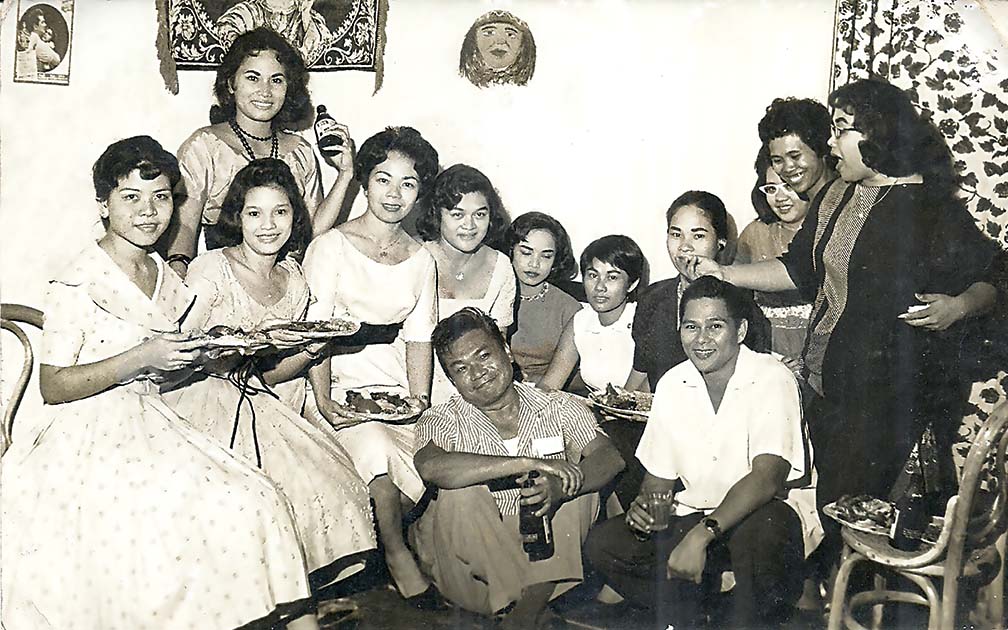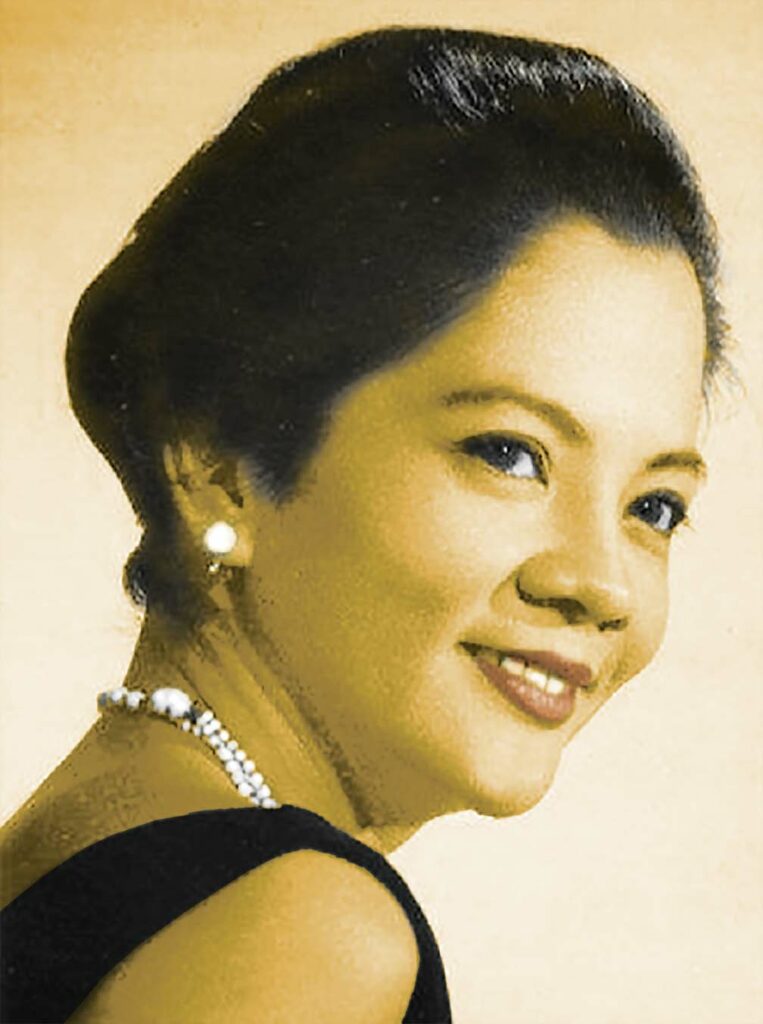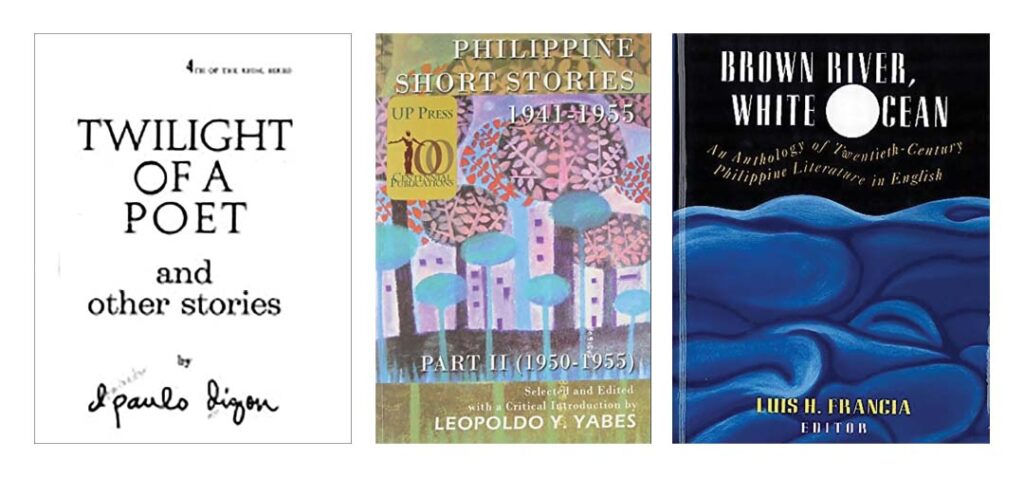A Google-search of his name will not yield much data or information. He is probably one of the Filipino fiction writers from the 1950s to the 1960s who does not have an exact date of birth that can be sourced online.
But his stories are unforgettable. In the words of National Artist for Literature Alejandro Roces, “D. Paulo Dizon is one of the finest Filipino writers of humorous stories.”
To my elder sisters, Lorna and Daphne, he was Tio Paulo, the husband of Tia Edith. The Dizon couple stood as ninong and ninang sa kumpil (confirmation godparents) of Lorna, the eldest daughter of our father, the late short story writer Clemente M. Roxas.
Papa and Tio Paulo were fast friends. It was a friendship forged during the early post-war years of the Philippine National Red Cross, the Sunday Post Magazine, Sunday Times Magazine, Literary SONG-MOVIE Magazine, and the United States Information Service (USIS), where he and my father wrote and found work.
In the late 50s, D. (short for Dominador) Paulo Dizon lived in a sprawling bungalow in San Antonio Village, Makati. My sisters Lorna and Daphne would walk their way from our small apartment in San Andres Bukid to the Dizon residence to take piano lessons from Tia Edith.
“Tio Paulo was a brawny, swarthy man while Tia Edith was so beautiful and fair” my sister Daphne recalled, adding that she had been about 10 years old, while Lorna was 12 when they learned their musical pieces on a sturdy, mahogany-red piano, under the tutelage of Tia Edith.
All these happened before I was born. I did not know Tio Paulo. But in our house in Quezon City, there is one remaining photo of the swarthy writer with an impish look about him, holding a bottle of beer while surrounded by a bevy of movie stars, including a young Gloria Sevilla and Amalia Fuentes.
EARLY YEARS
D. Paulo Dizon (1915-1961) was born in Santa Rita, Pampanga and it has been written that he was regarded as a “hopeless case” by his parents and teachers.
Dizon performed poorly in his studies and could not make the grade in Biology, Algebra, History, and English composition.

Not much else has been told about his early education or how he learned to be a writer. Still, somehow, he made his way, taking on odd jobs such as becoming an amateur plumber, a carpenter’s apprentice, busboy, dishwasher, waiter, pharmacy clerk, newsboy, and later, a short story writer.
WRITER, PR MAN
D. Paulo Dizon (1915-1961) was a writer in the public relations department of the Philippine National Red Cross before he became news editor of the United States Information Service in Manila.
After the war he worked on the editorial staff of the Sunday Times Magazine, later joining the Sunday Post Magazine. He wrote short stories and entertainment features for the Literary SONG-MOVIE Magazine.
Shortly before his death, he became a director of the National Press Club.
D. Paulo Dizon never won a literary prize. Some say that it was because he was considered a lightweight since he wrote humorous stories.
But Dizon earned the respect and admiration of noted writers like Celso Al. Carunungan, who regarded his works as “some of the most compellingly beautiful stories ever written by a Filipino in English.”
OF HUMOR AND DEPTH
Between 1962 and 1969, Twilight of a Poet and Other Stories by D. Paulo Dizon was published by Regal Publishing Company.

Alejandro Roces wrote the introduction to the 168-page book which contained the following stories: “The Man with Trembling Hands,” “The Boarding House,” “Girl on a Voyage,” “The Bamboo Flute,” “Napoleon and the Mayor,” “Courage,” “A Story Told in Anger,” “Twilight,” and “Copyright.”
“It is noteworthy that D. Paulo Dizon’s short stories have been published as a collection. With this book we can hope that the memory of one of the finest Filipino writers of humorous stories will be perpetuated,” Roces said.
In the book, Routledge Concise History of Southeast Asian Writing in English by Rajeev S. Patke and Philip Holden, Dizon is regarded as more than a humorist, citing ‘The Man with Trembling Hands” and “Girl on a Voyage” as “revealing further facets to his writing.”
The book said the two stories focused on protagonists who are alienated from their environment—“The Man with Trembling Hands” told the story of a man employed as a factory security guard to spy on his fellow workers, while “Girl on a Voyage” told of a young woman victimized because of her relationship with an American.
Over the years, D. Paulo Dizon’s stories found their way in anthologies like Brown River, White Ocean: An Anthology of Twentieth-Century Philippine Literature in English by Luis H. Francia (Editor) and Philippine Short Stories Part II (1950-1955) by Leopoldo Yabes.

These stories included: “Mother, Child, and the Fiddle,” “The Beautiful Horse,” “Penitent,” “Joseph’s Harmonica,” “Not Enough Fuel in the World,” and ‘Rain and Wooden Clogs.”


